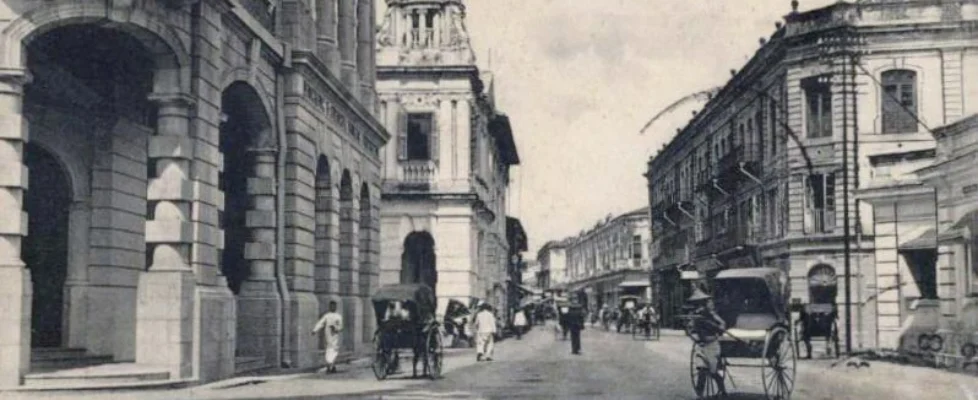Beach Street, Penang: Its historical significance and vibrant future
Beach Street, or Lebuh Pantai, is one of the most historically significant streets in Penang, Malaysia. Located in the heart of George Town, this vibrant street stretches along the eastern coast of the city and stands as a testament to the island’s colonial and economic history. From its humble beginnings as a vital trading post to its modern status as Penang’s financial hub, Beach Street has witnessed the transformation of Penang over the centuries.

Early Origins: The Birth of a Trading Hub
The origins of Beach Street date back to the founding of George Town by Captain Francis Light in 1786. At that time, Penang Island was under British control and developed as a free port, attracting traders from across Asia and Europe. Beach Street was strategically located along the coastline, providing easy access to the bustling harbor where ships from China, India, and the Malay Archipelago would dock. The street was the center of Penang’s thriving trade, with warehouses, godowns, and offices lining its shores.
As George Town grew, Beach Street emerged as the core of the island’s commercial activities. The early 19th century saw European traders establishing themselves along the street, setting up banking institutions, merchant houses, and shipping agencies. The street’s location near the port made it an ideal site for businesses to capitalize on Penang’s booming economy, fueled by commodities such as spices, tin, and rubber.
Early Photos and Post Cards of Beach Street






The Colonial Era: From Trading Post to Financial Hub
The British colonial period was a time of significant development for Beach Street. In the mid-19th century, as the British solidified their control over the region, Penang became part of the Straits Settlements, a British colony that also included Malacca and Singapore. This elevated the importance of Penang in the global trade network, and Beach Street became a center for financial services.
During this time, several iconic buildings were constructed along Beach Street, many of which remain today. The Standard Chartered Bank building, erected in 1875, is one of the oldest surviving structures on the street and symbolizes the financial growth of Penang during the British era. Other notable buildings include the Hong Kong and Shanghai Bank, the Chartered Bank of India, and various mercantile establishments that dealt in goods ranging from textiles to spices.
By the late 19th century, Beach Street had become the financial heart of Penang, with banks, insurance companies, and shipping agencies establishing their headquarters here. The street was a hub of activity, with both local and foreign merchants conducting business and fueling the island’s economy.



The 20th Century: Modernization and Decline
The early 20th century brought further changes to Beach Street. Penang’s economic landscape evolved as new industries, such as rubber processing and tin mining, grew in importance. Beach Street continued to serve as a financial center, but it also became home to a wider range of businesses, including retail outlets, cafes, and hotels.
However, the outbreak of World War II and the subsequent Japanese occupation of Penang (1941-1945) brought significant challenges to the island’s economy. Beach Street, like much of George Town, suffered from the destruction and disruption caused by the war. Many businesses were forced to close, and the once-thriving commercial hub entered a period of decline.
Post-war recovery was slow, but by the 1950s and 1960s, Beach Street began to regain its status as Penang’s financial district. New buildings were constructed, and many old colonial structures were restored to accommodate modern businesses. The introduction of Malaysia’s banking regulations and financial reforms further solidified Beach Street’s role as a key player in the country’s economy.
Beach Street Today: A Blend of Heritage and Modernity
Today, Beach Street is a fascinating blend of old and new, with heritage buildings standing alongside modern structures. It remains Penang’s central business district, home to many banks, corporate offices, and financial institutions. The street has also gained recognition for its cultural and architectural significance as part of George Town’s UNESCO World Heritage Site.
In recent years, efforts have been made to preserve Beach Street’s historical charm. The George Town World Heritage Inc. and local authorities have worked to restore many of the colonial-era buildings, ensuring that the street’s rich history is not lost to modern development. Visitors to Beach Street can explore these heritage buildings, many of which retain their original facades, offering a glimpse into Penang’s colonial past.
Additionally, Beach Street has embraced the growing trend of urban revitalization. The once-busy trading street now hosts a lively weekend market known as “Occupy Beach Street,” where local vendors sell handicrafts, food, and artwork. The street is temporarily closed to traffic on Sunday mornings, allowing pedestrians to enjoy a car-free zone filled with activities, performances, and markets.
What of its Future
Beach Street stands as a symbol of Penang’s evolution, from its early days as a bustling port and trading hub to its current status as a financial and cultural landmark. Its colonial architecture, historical significance, and modern vibrancy make it one of the most iconic streets in George Town. As Penang continues to grow and evolve, Beach Street remains a key part of its heritage, preserving the legacy of the island’s past while embracing the opportunities of the future.





